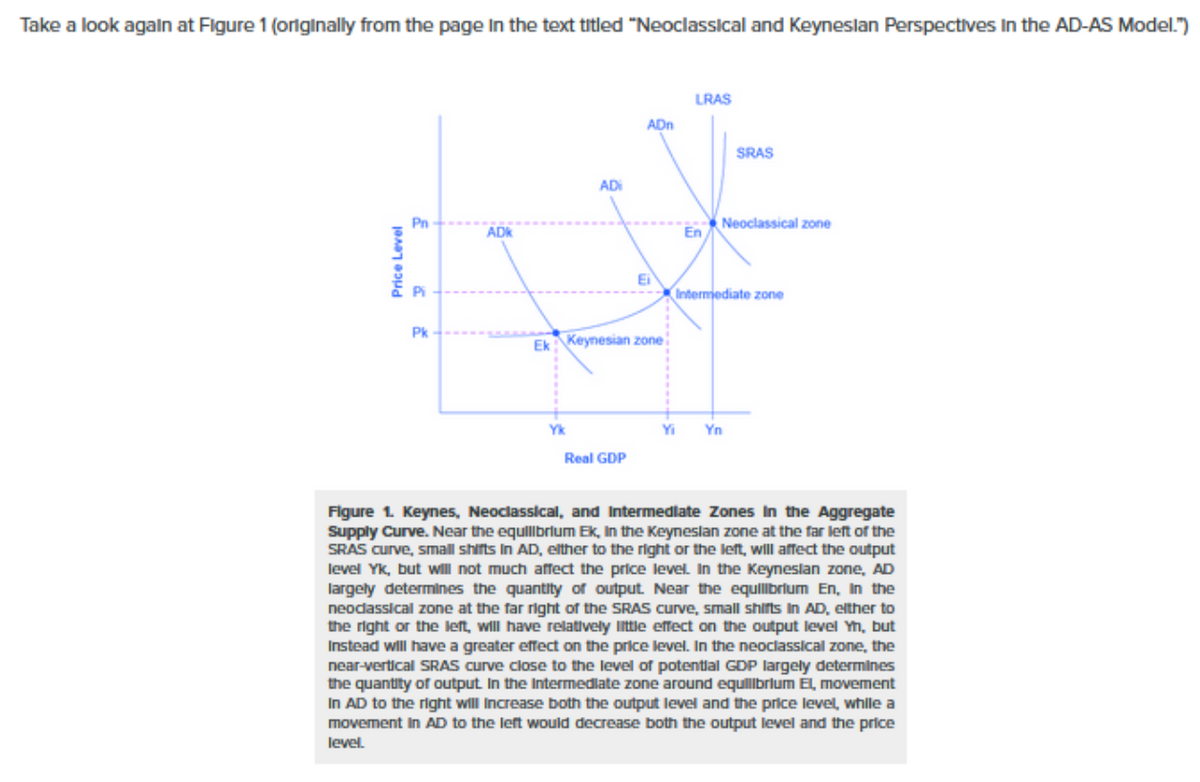Think about a minor recession, like the one that occurred in 1990. (Hint: a minor recession could be caused by a slight shift to the left in the AD curve.) What would a Keynesian likely recommend in response to a recession? What would a neoclassical likely recommend? Why would a Keynesian policy response not make much sense in response to a minor recession like the one that occurred in 1990? What would be the cost of letting the economy adjust by itself to a new long run equilibrium? Now think about a major recession, like the one that occurred in 1982. (Hint: a major recession could be caused by a large shift to the left in the AD curve.) Why would a Keynesian policy make more sense in response to a major recession like the one that occurred in 1982? What would be the
Think about a minor recession, like the one that occurred in 1990. (Hint: a minor recession could be caused by a slight shift to the left in the AD curve.)
What would a Keynesian likely recommend in response to a recession? What would a neoclassical likely recommend? Why would a Keynesian policy response not make much sense in response to a minor recession like the one that occurred in 1990? What would be the cost of letting the economy adjust by itself to a new long run equilibrium?
Now think about a major recession, like the one that occurred in 1982. (Hint: a major recession could be caused by a large shift to the left in the AD curve.) Why would a Keynesian policy make more sense in response to a major recession like the one that occurred in 1982? What would be the cost of following a neoclassical policy then?

Trending now
This is a popular solution!
Step by step
Solved in 3 steps




